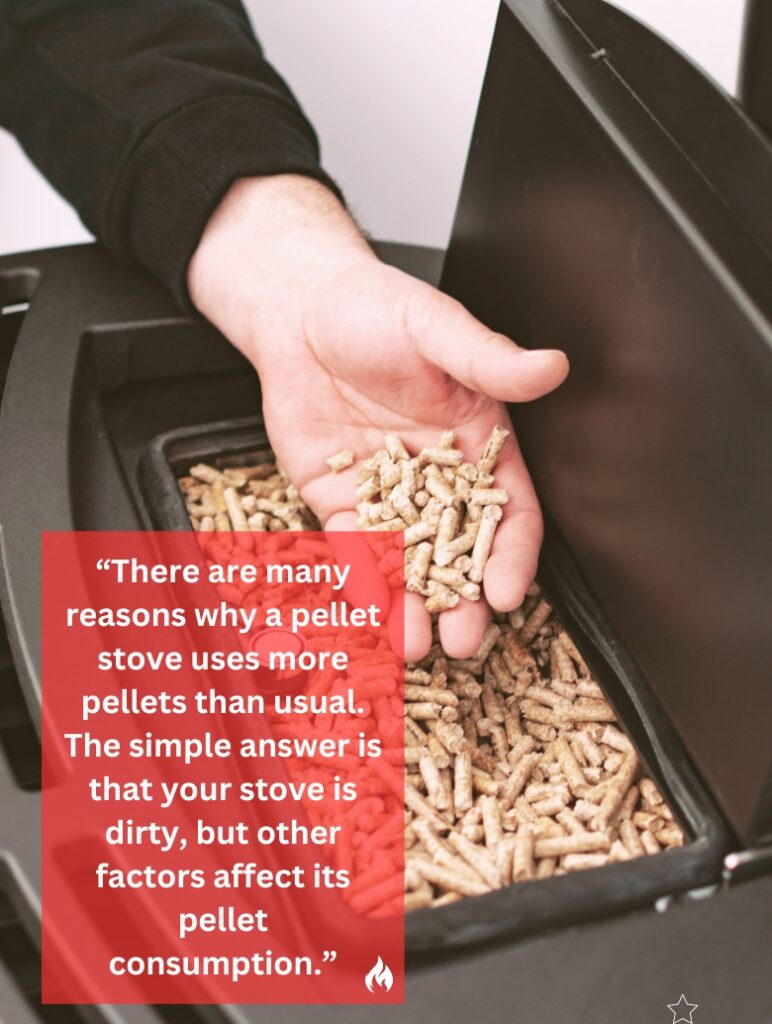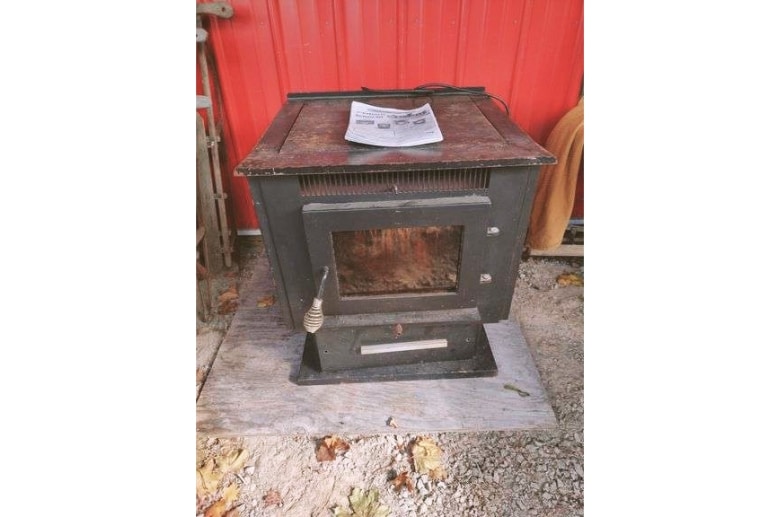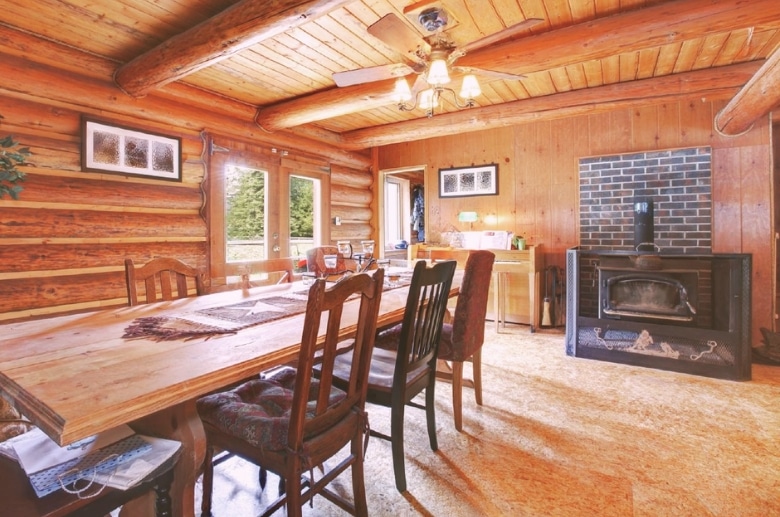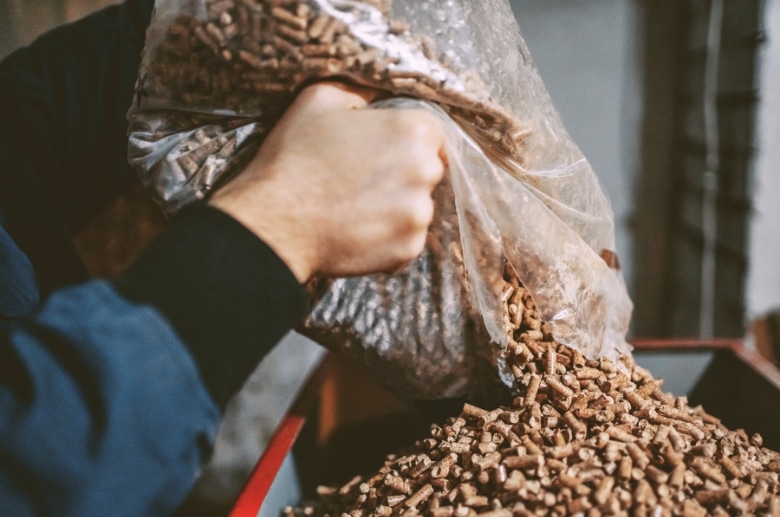Pellet stoves are one of the most popular heating methods for the home. In fact, it makes up one-third of wood stove sales in the United States. If you’ve had your pellet stove for quite some time and you’re starting to notice it’s going through fuel faster than usual, you’re probably wondering, “Why is my pellet stove using so many pellets?”
There are several reasons why this could happen. We’ll explore some of the reasons why a stove uses more pellets than usual. We will also provide some tips to prevent it from happening.
Why Is My Pellet Stove Using So Many Pellets?

There are many reasons why a pellet stove uses more pellets than usual. The simple answer is that your stove is dirty, but other factors affect its pellet consumption. Let’s try to figure out why this is happening.
Factors Affecting Pellet Stove Consumption
Here are the primary factors influencing the consumption of your pellet stove:
Pellet Quality and Type
Low-quality pellets tend to be less dense and have lower energy content. This means that they won’t burn as efficiently, resulting in the use of more pellets just to achieve the same level of heat. Moisture content should be considered when buying wood pellets. The dryer, the better. Wet pellets are not only efficient, but they also clog the auger motor and damage the stove.
Auger Motor
The auger is responsible for feeding pellets from a fuel hopper into the burn pot. Too many pellets in the stove means that the auger motor is not working properly. You may need to oil or lubricate the motor for it to work more efficiently. At best, it needs pellet stove repair from a professional technician.

Stove Age
An older stove means it has gone through frequent use. Age can compromise efficiency, thus the need for more pellets. Pellet stoves generally last 15 to 20 years. But if don’t perform regular pellet stove maintenance it won’t last nearly as long as expected. At most, it will last for 10 years and will be burning through wood pellets much faster compared to a well-maintained stove.

Room size
The amount of pellet fuel required to heat a space will depend on its size. The pellet stove must be appropriately sized for the space it’s heating. A good rule of thumb to follow is 5,000 BTU output per 200 square feet of space. So, for example, a stove rated at 25,000 BTU is needed for a 1,000-square-foot home. A stove that’s too big will require you to burn wood pellets on low, which is a waste of fuel. If it’s too small, it will not provide sufficient heat.
External Temperatures and Weather Conditions
Bad weather is another reason why your pellet stove uses more pellets than usual. It’ll take more energy to heat your home if the weather is cold outside.
Thermostat and Heat Settings
Check your thermostat since faulty settings could be another reason why your pellet stove is working harder than usual. If you see that it’s set to a higher temperature, this means your pellet stove is working hard to maintain that temperature, resulting in more wood pellets being used.
Dirty Stove or Exhaust
A dirty stove consumes more pellets because the dirt prevents air from passing through the vents. The stove keeps feeding pellets, but nothing burns properly. More pellets burned means higher levels of soot, and the cycle goes on. Get to the root of the problem by cleaning the stove and exhaust so it can work more efficiently and use fewer pellets.
Airflow Issues
If you have too much air, pellets will replenish themselves faster than usual. If there is not enough air, pellets will overflow the burn pot, resulting in clumping ash and dirty glass pipes. There must be enough air coming into contact with the pellets combusted by the igniter. This is what allows it to burn efficiently. Check for leaks that let air escape or blockages in the inlet cap, as this contributes to airflow problems in your stove.
Improper installation
An improperly installed pellet stove is not only inefficient at using pellets. It’s also dangerous. If you notice from the very beginning that your pellet stove is using too many pellets, it may be because it was not installed correctly. Check the venting system, as this is a critical component of pellet stove installation. The vent is where your pellet stove will release its exhaust gasses.
Ventilation problems
The pellet stove will require direct venting or a chimney. The vent pipe should be angled slightly upwards towards the exterior so air flows properly. Check the outside of your chimney to see if there are any obstructions to ventilation. For instance, tall trees can block ventilation, so these need to be cleared before installing the vents.
——
Do You Need to Hire Chimney & Fireplace Expert?
Get free quotes from qualified experts near you. No commitment required!
——
How do I know if my pellet stove is using too many pellets?
The best way to know if you’re using too many pellets is by paying attention to your typical usage. Depending on the size of your home and how frequently you use the pellet stove, you should be able to go through one 40-pound bag of pellets for every 24 hours of heat. Bigger spaces require more pellets, maybe even a second pellet stove.
If you notice you’re using more than the regular amount of pellets for your stove, consider checking its settings first. The temperature of the fire can be adjusted using the feed adjuster on the pellet stove. This control manages how fast pellets are fed into the hopper (the pellet reservoir). A higher feed rate results in a hotter fire.
The feed rate functions similarly to a timer. For example, setting a feed rate of 2 results in the feed motor operating for 20 seconds followed by a 4-second pause. Increasing the feed rate to 3 extends the motor’s run time to 30 seconds, with an equal 30-second rest period. At a feed rate of 4, the motor feeds for 40 seconds and then turns off for 20 seconds, and this pattern continues with higher settings.
Ideally, maintaining a feed rate between 3 and 4 is recommended.
How can I reduce the pellet stove feed rate?
After you’ve determined that your pellet stove is indeed using more pellets than normal, you can take the right steps to reduce it.
Aside from adjusting the feed rate on your pellet stove, there are some things you can do to avoid using too many pellets. Follow these steps so you save on fuel the next time you use your pellet stove.
1. Use the lowest setting
It’s best to use your pellet stove at a lower, steady heat setting. This will help bring your home to a desired temperature and will keep it that way for a longer period of time. The stove will also stay cleaner since you are not going through as much fuel. Avoid over-firing the stove. The higher the heat setting, the more pellets you need to feed your fire, the less efficient your stove will be. The more pellets it uses, the faster it’ll get dirty.

2. Use high-quality pellets
Go for high-grade pellets, as these produce less ash and have higher burning efficiency. If your stove is producing a lot more ash than usual, it might be time to switch to new pellets. Instead of stocking up on one kind, purchase only a small amount of different pellets.
See how they perform before deciding to invest in a larger quantity of wood pellets. You may also need to check for your particular model of the pellet stove, as certain manufacturers require specific types of wood pellets. Using the high-quality pellets costs a bit more, but you’ll find it’s worth the extra expense since you’re preventing excess soot buildup and other issues caused by poor-quality pellets.
3. Check the ash and dust content
Another way to reduce the amount of wood pellets you use is by checking the pellet stove for dust and ash. Regularly scrape the burn pot and clean out the ash from the burn chamber and ash pan. This can be done on a weekly basis so your stove burns pellets more efficiently.
What routine maintenance is required for a pellet stove?
These are the steps you need to take regularly in order to maintain your stove.
- Clean and vacuum the ash and dust from the main burn chamber areas every two weeks.
- Scrape the burn pot, making sure it is free from pellets, debris, or carbon.
- Inspect electrical wiring, heat switches, and vacuum sensors. Inspect the hopper and auger plate.
- Clean the viewing glass with a soft cloth and glass cleaner specially formulated for pellet stove glass. Avoid wiping with abrasive material since this can scratch the surface and affect the integrity of the glass.
- Perform annual maintenance to prevent fire. Burning pellets create soot buildup in the pipe over time which can lead to a chimney fire. Get your pellet stove serviced by a chimney professional. They will inspect all the vital components of your pellet stove and clean it, making sure it is working properly.
Conclusion
A properly maintained pellet stove is essential not only for saving fuel but also for your home’s safety. Before using it, check to see that the feed rate is set correctly and that you are using it at the lower, steady heat setting. This ensures that you burn just the right amount of pellets for your space.
If you run into any problems trying to maintain your pellet stove, find a qualified professional who can help you. They can give you accurate information as to why your pellet stove might be using too many pellets and fix the issue that’s causing it.






